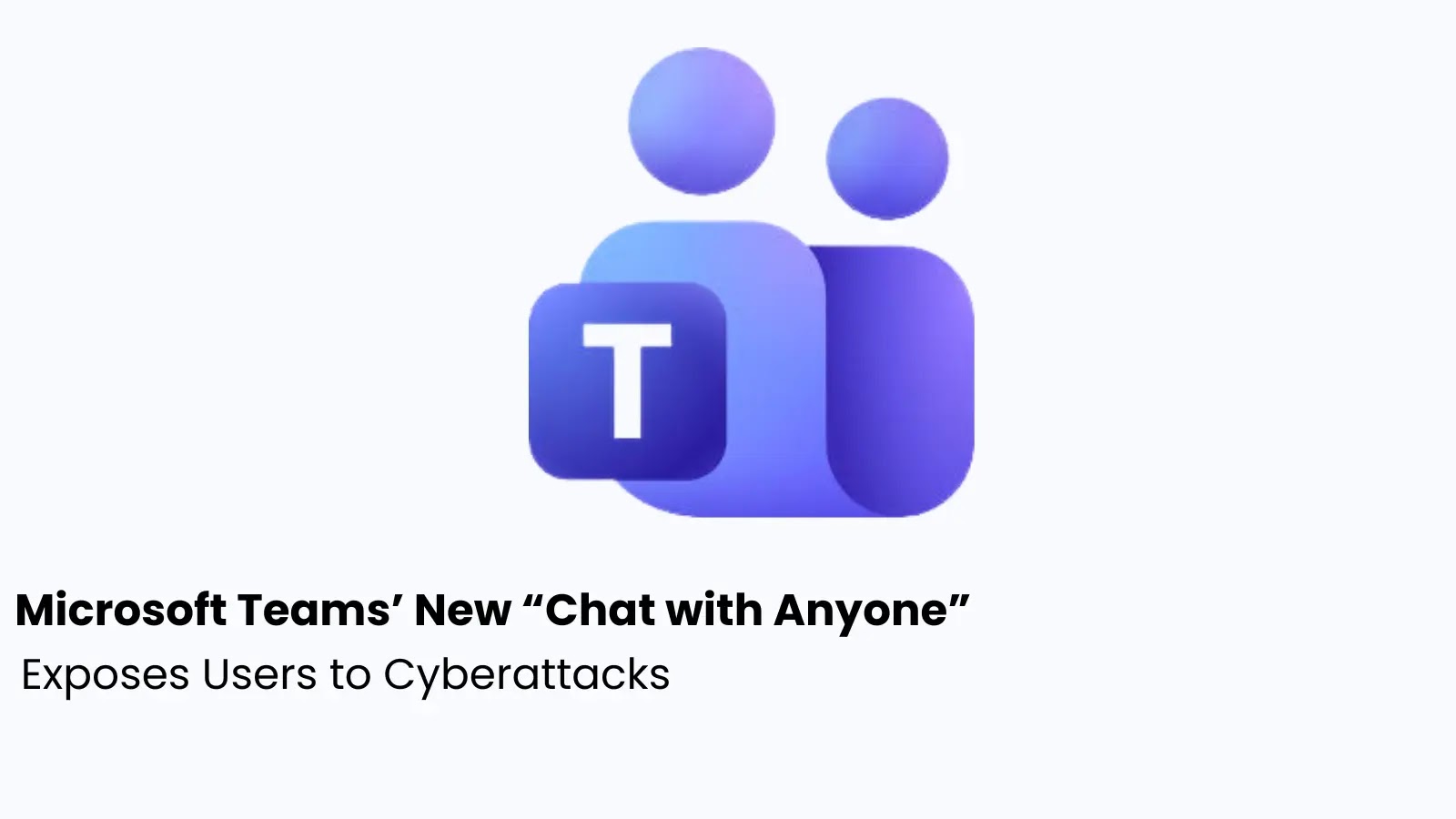
Microsoft Teams’ New “Chat with Anyone” Feature Exposes Users to Phishing and Malware Attacks
Microsoft Teams’ “Chat with Anyone” Feature: A New Gateway for Phishing and Malware?
Microsoft Teams is an indispensable communication and collaboration platform for countless businesses worldwide. Its ongoing evolution often brings features designed to enhance productivity and connectivity. However, a forthcoming update, allowing users to initiate chats with external individuals solely via their email address—even if they aren’t Teams users—has raised significant red flags among cybersecurity experts. This seemingly convenient feature, slated for targeted release in early November 2025 and global rollout by January 2026, presents a novel attack vector for phishing and malware campaigns.
The core concern, as highlighted by Cyber Security News, lies in the ability for any external email address to generate an invite, potentially bypassing existing organizational security perimeters. While the intent is to foster seamless external communication, the practical implications for corporate security are considerable.
Understanding the “Chat with Anyone” Mechanism
The new feature fundamentally alters how external communication can be initiated within Teams. Previously, external interactions often required more formal established channels or reciprocal presence on the Teams platform. With “Chat with Anyone,” a user can simply input an email address, and the recipient will receive an invitation to join the conversation as a guest. This guest invitation mechanism inherently lowers the barrier to entry for external parties to interact directly with internal users.
While the recipient joins as a “guest,” this still creates a direct communication channel. Attackers could leverage this functionality to craft highly convincing social engineering lures, exploiting the perceived legitimacy of a Microsoft Teams invitation to gain access or deploy malicious payloads.
The Phishing and Malware Threat Landscape
This new feature introduces several avenues for sophisticated attacks:
- Enhanced Phishing Lures: Attackers can send legitimate-looking Teams chat invitations, preying on users’ trust in the platform. These invitations could lead to malicious landing pages disguised as Teams login portals to harvest credentials.
- Direct Malware Delivery: Once a deceptive chat is established, attackers could attempt to share malicious files (documents, executables, scripts) under the guise of legitimate business communications. Users, often accustomed to sharing files internally via Teams, might lower their guard.
- Social Engineering Amplification: The ability to easily initiate external chats broadens the scope for targeted social engineering. Attackers can impersonate trusted external partners, suppliers, or even internal executives through spoofed email addresses, making their requests appear more authentic within the Teams interface.
- Bypassing Email Gateways: While robust email security solutions filter a significant amount of spam and phishing, the Teams chat invitation might circumvent some of these layers, as the initial contact occurs within the Teams environment itself.
Remediation Actions and Mitigations
Organizations must proactively address the potential risks introduced by Microsoft Teams’ “Chat with Anyone” feature. Comprehensive strategies involving policy, technology, and user education are vital:
- Strict External Access Policies: Implement and enforce strict policies governing external guest access within Teams. Control who can invite external users and what permissions guests have.
- Conditional Access Controls: Leverage Microsoft Entra ID (Azure AD) Conditional Access to restrict guest access based on device compliance, location, or multi-factor authentication (MFA) status.
- Disable Unnecessary External Communication: If the “Chat with Anyone” feature poses an unacceptable risk, consider disabling or heavily restricting it through Teams’ administrative controls until robust safeguards are in place.
- Advanced Threat Protection (ATP): Ensure Microsoft 365 Defender (formerly ATP) is fully configured and optimized for Teams, including Safe Links for URL protection and Safe Attachments for file screening.
- User Awareness Training: Conduct recurring and focused security awareness training specifically addressing Teams-based phishing, social engineering tactics, and the dangers of opening unsolicited attachments or clicking suspicious links within chat. Educate users on how legitimate external communications should appear and the process for verifying sender identity.
- Monitor Guest Activities: Implement robust logging and monitoring for guest user activities within Teams, including chat initiation, file sharing, and access patterns, to detect anomalous behavior.
- Implement Data Loss Prevention (DLP): Utilize Teams DLP policies to prevent sensitive information from being inadvertently or maliciously shared with external guests.
- Review and Audit External Sharing Settings: Regularly audit and review all external sharing and guest access settings across your Microsoft 365 tenant, ensuring they align with your organization’s security posture.
Tools for Detection and Mitigation
Leveraging appropriate tools is crucial for securing the Teams environment:
| Tool Name | Purpose | Link |
|---|---|---|
| Microsoft 365 Defender (formerly MTP) | Comprehensive threat protection for identities, endpoints, email, applications, and data including Teams. | Official Microsoft Site |
| Microsoft Entra ID (Azure AD) Conditional Access | Enforce policies for access to resources based on conditions for guests and internal users. | Microsoft Learn |
| Microsoft Teams Admin Center | Manage Teams policies, external access, guest access, and security settings. | Access Teams Admin Center |
| Security Information and Event Management (SIEM) solutions (e.g., Splunk, Microsoft Sentinel) | Aggregate and analyze logs from Teams and other M365 services for threat detection and anomaly flagging. | Splunk, Microsoft Sentinel |
Key Takeaways for a Secure Teams Environment
The “Chat with Anyone” feature, while designed for flexibility, underscores a critical shift in the attack surface for organizations utilizing Microsoft Teams. Security teams and IT administrators must recognize that the ease of initiating external communication can be exploited by malicious actors. Proactive policy implementation, granular access controls, the strategic deployment of Microsoft 365 Defender capabilities, and continuous user education are not just best practices—they are necessities. Staying informed about upcoming features and their security implications, as highlighted by expert analysis, allows organizations to adapt their defenses and maintain a robust cybersecurity posture against evolving threats.





